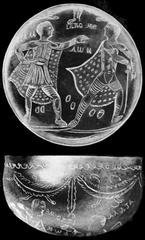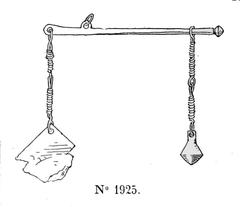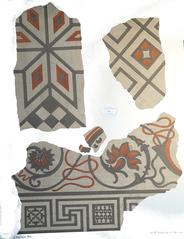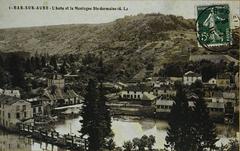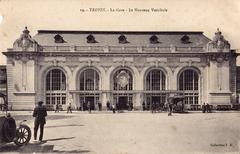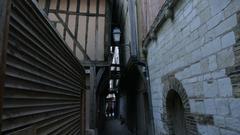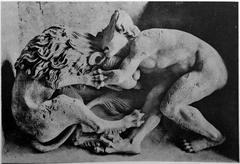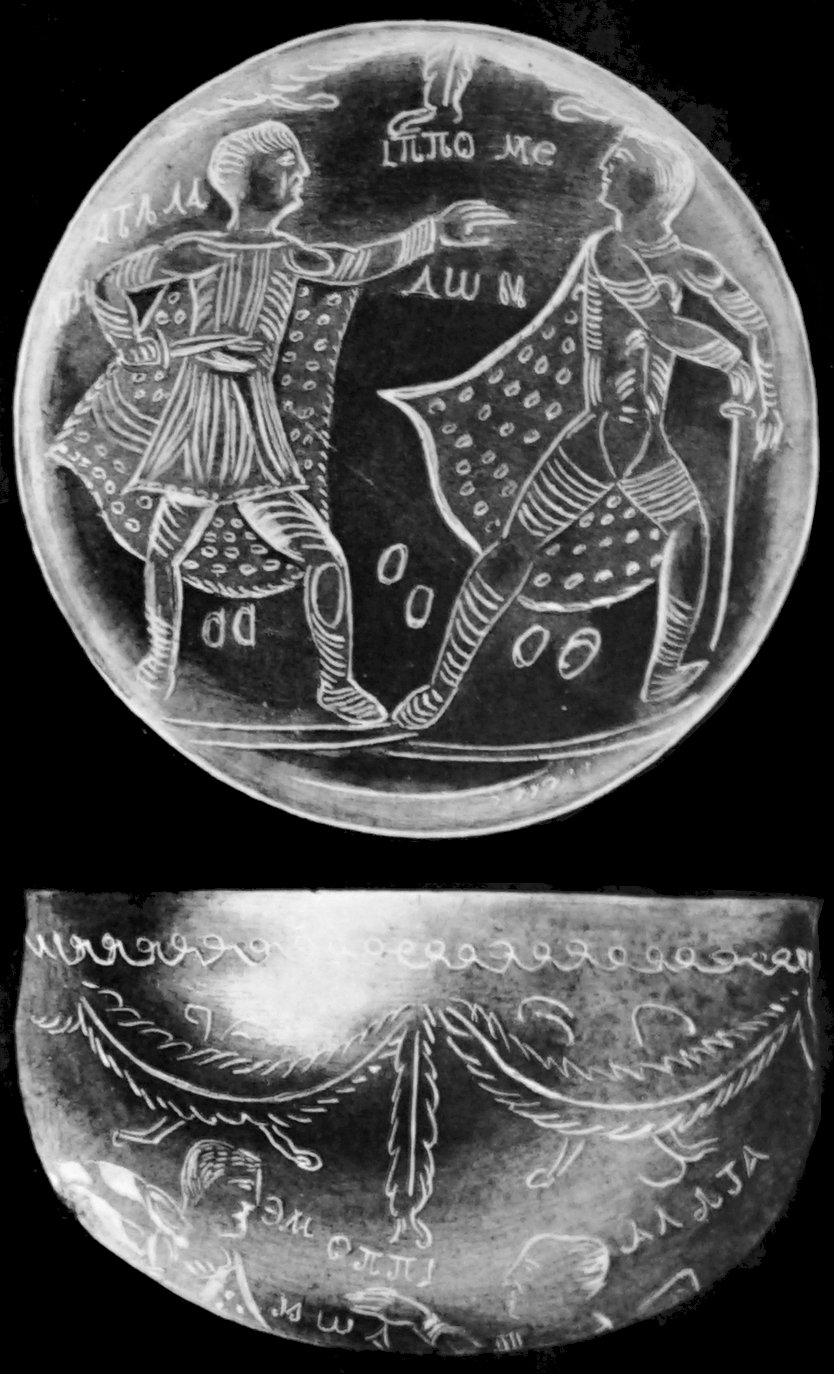
Musée des Beaux-Arts de Troyes: Complete Visiting Guide (Hours, Tickets, Collections & Travel Tips)
Date: 15/06/2025
Introduction
Located in the historic heart of Troyes, France, the Musée des Beaux-Arts de Troyes—also known as the Musée Saint-Loup—stands as a testament to the city’s deep artistic and cultural heritage. Housed in the former Saint-Loup Abbey, a classical monastic complex dating from the 17th and 18th centuries, the museum offers an immersive journey through European art and archaeology, with collections ranging from the Middle Ages to the 19th century. Founded after the French Revolution to preserve confiscated artworks, it has grown into a premier regional institution, now home to masterpieces by Giotto, Watteau, Boucher, Corot, Courbet, and many others.
This comprehensive guide provides all the essential information for planning your visit: historical context, collection highlights, practical details (including hours and ticketing), accessibility, and tips for exploring Troyes’ other historical attractions. For the latest updates and resources, consult the official museum website and the Grand Est tourism site.
Contents
- Historical Background & Significance
- The Museum’s Collections
- Planning Your Visit (Hours, Tickets, Accessibility, Tours)
- Highlights: Must-See Masterpieces
- Practical Travel Tips & Nearby Attractions
- Facilities & Visitor Services
- FAQ
- Sources
Historical Background & Significance
Origins and Development
The Musée des Beaux-Arts de Troyes traces its beginnings to 1792, in the wake of the French Revolution, as part of efforts to safeguard art seized from religious institutions. Settling permanently in the Saint-Loup Abbey by 1829, its first gallery opened in 1831. The museum’s holdings rapidly expanded, especially after significant bequests such as Dominique Morlot’s in 1833, which helped establish Troyes as a center for art preservation and appreciation.
Architectural Setting
The Saint-Loup Abbey provides a grand and atmospheric home for the museum. This remarkable building, with its classical facades and vaulted cellars, is itself a piece of history—having transitioned from religious site to cultural institution in the 19th century. Subsequent additions, including several pavilions, have allowed the museum to expand its displays and research facilities.
The Museum’s Collections
Paintings
The museum boasts an outstanding collection of European paintings, especially strong in French works from the 17th to 19th centuries. Notable highlights include:
- Antoine Watteau: “L’Aventurière” and “L’Enchanteur”
- François Boucher: Rococo masterpieces such as “The Rest on the Flight into Egypt”
- Jean-Auguste-Dominique Ingres: “Study for the Apotheosis of Homer”
- Camille Corot: Atmospheric landscapes bridging classicism and Impressionism
- Giotto: A rare Madonna and Child, pivotal to the museum’s medieval collection (Beaux Arts Magazine)
Other important names represented include Jean-Jacques David, Élisabeth Vigée Le Brun, Hyacinthe Rigaud, Pierre and Nicolas Mignard, and significant Italian, Flemish, and Dutch masters like Vasari and Cranach.
Sculpture
The sculpture galleries feature works spanning the Middle Ages to the 19th century, including:
- François Girardon: “Buste de Louis XIV”
- Charles Cordier: Ethnographic busts, including a polychrome “Jewish Woman from Algiers”
- Jules Édouard Valtat: “Oreste poursuivi par les Furies” and “Adam et Ève”
- A notable 18th-century terracotta bust of Voltaire
Decorative Arts & Enamels
The museum holds important collections of Limoges enamels, regional faience, and decorative arts. The galleries also present fine examples of furniture, objets d’art, and graphic works tracing the evolution of applied arts in Champagne.
Archaeology
Housed in the abbey’s cellars, the archaeological collection presents artifacts from prehistory to the Merovingian period, including:
- Trésor de Pouan: A 5th-century princely tomb treasure
- Gallo-Roman bronze “Apollon de Vaupoisson”
- Objects from ancient Egypt, Greece, and Etruria
Highlights: Ten Must-See Masterpieces
According to Beaux Arts Magazine, don’t miss:
- Giotto, Madonna and Child
- Lucas Cranach the Elder, Portrait of a Lady
- François Boucher, The Rest on the Flight into Egypt
- Camille Corot, Landscape near Rome
- Jean-Baptiste Oudry, Still Life with Game
- Jean-Baptiste Greuze, The Broken Jug
- Gustave Courbet, The Wave
- Jean-Auguste-Dominique Ingres, Study for the Apotheosis of Homer
- Terracotta Bust of Voltaire
- Troyes Faience Plate
These masterpieces showcase the breadth of the museum’s collections and the region’s artistic heritage.
Planning Your Visit
Visiting Hours
- Tuesday to Sunday: 10:00 AM – 6:00 PM (with some variations by season)
- Closed Mondays and select public holidays
Always check the official website for current hours and any temporary closures.
Ticket Prices
- Adults: €6–€8 (depending on exhibitions)
- Reduced: €4–€5 (students, seniors)
- Free: Children under 18, Troyes residents, first Sunday of every month, and select categories with proof (jobseekers, disabled visitors, ICOM members, journalists)
Tickets can be purchased on-site or online (museum ticket page).
Accessibility
- Wheelchair access available in most galleries; some upper floors may be limited due to the historic building.
- Accessible restrooms provided.
- Assistance is offered upon request. Contact ahead if you have specific needs.
Guided Tours and Events
- Regular guided tours on weekends or by appointment (French and English options).
- Temporary exhibitions, workshops, and cultural events are held throughout the year (events calendar).
- Audio guides are limited but may be available in the future.
Practical Travel Tips & Nearby Historical Attractions
Getting There
- Address: 1 rue Chrestien-de-Troyes, 10000 Troyes, France
- By train: 15-minute walk from Troyes train station
- By bus: Local stops near Place Saint-Jean and rue de la Cité
- Parking: Public lots at Parking Saint-Jean and nearby city locations
Best Time to Visit
- Weekday mornings or late afternoons for a quieter experience
- Arrive early on free admission days
Nearby Attractions
- Troyes Cathedral: A Gothic masterpiece with stunning stained glass (400m away)
- Musée d’Art Moderne de Troyes: Modern and contemporary art, just 45 meters away
- Maison de l’Outil et de la Pensée Ouvrière: Fascinating tool museum (550m)
- Pharmacie Musée de l’Hôtel-Dieu: Historic apothecary (110m)
- Ruelle des Chats: Picturesque medieval alley (700m)
- Château de Chacenay: Feudal castle, 24km from Troyes
See more on Troyes Tourism.
Dining & Accommodation
Central location provides easy access to cafés, bistros, and a wide range of hotels. The Troyes Tourist Office offers booking assistance.
Facilities & Visitor Services
- Cloakroom: Secure storage for coats and bags
- Restrooms: Including accessible toilets
- Museum Shop: Art books, postcards, and regional souvenirs
- Seating: Benches throughout the galleries for rest
- Language: Most signage in French, some English materials available; guided tours in English by request
Frequently Asked Questions (FAQ)
Q: What are the opening hours?
A: Typically Tuesday to Sunday, 10:00 AM–6:00 PM. Closed Mondays. Confirm on the official website.
Q: How much are tickets?
A: Adults €6–€8; reduced rates for students/seniors; free for children under 18 and others (see above).
Q: Is the museum wheelchair accessible?
A: Most galleries are accessible; some upper floors may not be due to the historic setting.
Q: Are guided tours available?
A: Yes, by prior booking and on select days, in French and English.
Q: Can I take photos?
A: Non-flash photography is generally allowed except where indicated.
Q: What are the best nearby attractions?
A: Troyes Cathedral, Musée d’Art Moderne, Maison de l’Outil, and the medieval old town.
Summary
The Musée des Beaux-Arts de Troyes is a vital cultural destination—combining a rich and varied art collection with a fascinating historical setting. Its accessible facilities, central location, and proximity to other historic sites make it an ideal centerpiece for exploring Troyes. Plan ahead to make the most of your visit, check for current exhibitions, and consider using digital tools like the Audiala app for audio guides and interactive tours.
Sources and Official Websites
- Musée des Beaux-Arts de Troyes Official Site
- Beaux Arts Magazine: 10 Masterpieces to See
- Musée des Beaux-Arts et d’Archéologie de Troyes Visitor Guide
- Musée des Beaux-Arts de Troyes Practical Information
- Troyes Champagne Tourism
